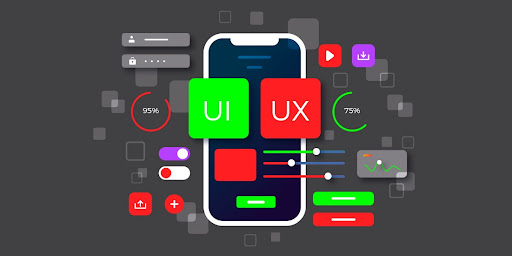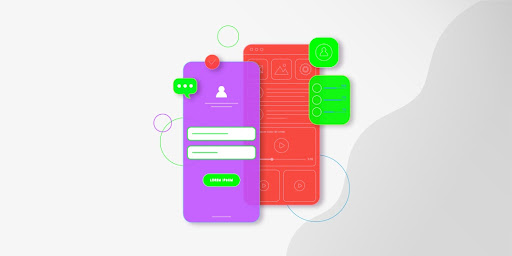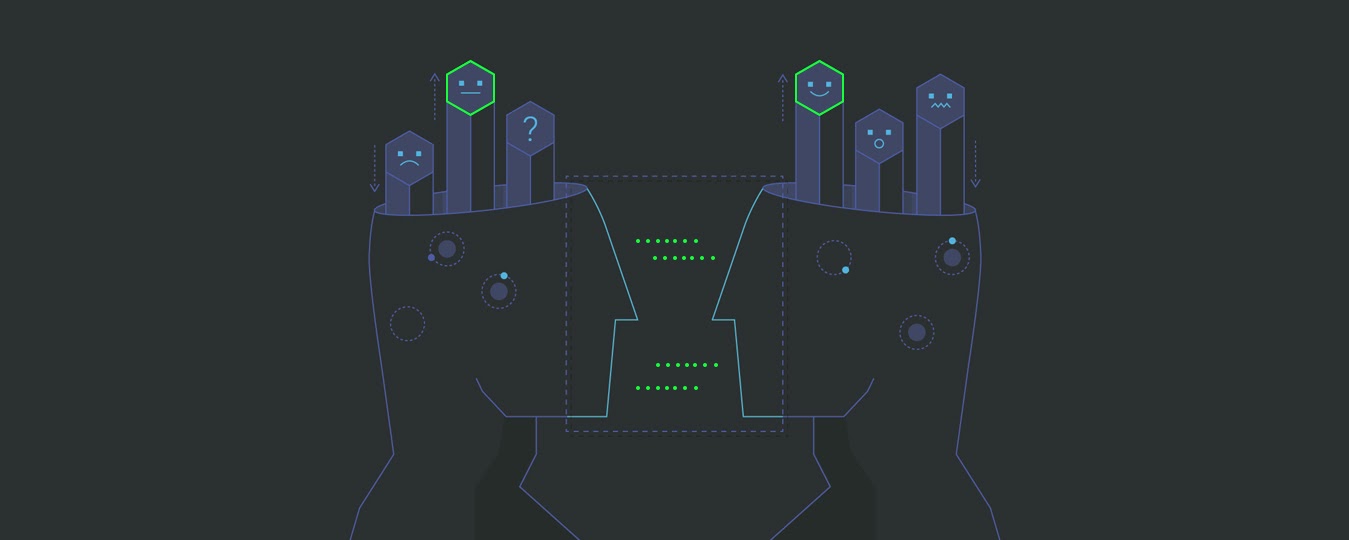As humans, we think of ourselves as radical beings, but in reality, we are largely driven by emotions. It shouldn’t come as a surprise, because day after day, year after year, advertisers and marketers have tapped into our emotional psyche to lead us into buying their products or services. From Dhara Oil’s “Jalebiyan” to the IPLs “India ka Tyohar”, time and again, our emotions have been at the core of advertising, and we have all responded well in each instance.
UI Design and Visual Outlook
Advertising and UI in websites and apps are two distinct things. Aren’t they? Well, only to an extent. Every time we interact with a brand or business through its website, knowingly or unknowingly, we are guided by emotions, especially when it comes to the visual outlook of the interface. After all, we have all noticed, how a bright-looking website/app with large font types and high-quality images has us engaged on a deeper level, as against that with the illegible fonts and an overall dull or dreary appearance. So yes, as with products packaging does play a role with websites and apps as well!
In fact, almost everything a customer comes across – whether in the physical world or in the digital world, often triggers an emotional reaction – like or dislike, joy or frustration, affinity or annoyance, and so on and so forth!

Emotion as an Element of UI
Now that it is clear that a design can elucidate a wide range of emotions, it is time to understand how the user experience can be turned into a positive emotional joyride through a specifically designed User Interface.
To put things in perspective, in today’s increasingly digital world, the website or app is possibly the first and, in most cases, the only point of interaction between a customer and a brand or business.
Hence, it is more essential than ever before to ensure that a precise emotion is evoked, every time a new or existing customer visits the brand’s digital platform. In order to nail this down to the T, it is essential to work on three distinct levels –
Visceral Design
It is said, ‘First impression is almost always the last impression”. This is precisely where visceral design comes into the picture. the principles of Visceral design dictates that the UI must elucidate an intuitive reaction which not only helps ring a bell of positivity in the user, but also showcases the quality, trustworthiness, and the value proposition of both the platform and the brand all at the same time, and all at the very first glimpse or scroll.
To put it one word – “uncompromising” is what the visceral design should be!

Behavioral Design
This is where the design ought to tap into the competence of the user. When using the app or website, the user experience must be such that the user can seamlessly get a handle on the platform and its functions. Simply put, the Behavioral Design must be such that it makes the user feel smart about themselves.
To enable this the design should be flowy enough that it creates confidence in the user while ensuring that ample attention is being drawn towards the product and other offerings. As far as behavioral design is concerned striking a harmony between the ease of navigation and a minimal level of smartness required on the user’s end can almost always do the trick.
Behavioral Design is exceptionally crucial for the user to keep coming to the website or app, lest the platform may experience the unfortunate fate stated by the fact that 77% of users never use an app again 72 hours after installing.

Reflective Design
Next in line for a website or app to evoke the right set of emotions is the reflective design. In the present-day dynamic world, making a website or app that is functional is by no means sufficient. Right from creating a visual appeal to creating an exceptional image of the brand, from offering a memorable experience to helping the user create a lasting bond with the brand, a good design must achieve it all, at least if it wants the user to keep coming back.
In short, visceral, behavioral, and reflective designs – all play a crucial role in determining whether a website is able to nail the emotional user interface!
Impact of Emotion Based UI Design
Increased User Engagement and Connection
Emotions are everywhere. Even when people are searching for something on the net, they are unknowingly responding to their emotions by looking at the designs, words, images, and other visual receptors on websites. We tend to repeat positive experiences as they help us make sense of the reality around us. The better our experience, the more are the chances of a repeat action.
On the other hand, the negative emotions will instantly push the users away. That’s how our brains are wired. This is why designers need to keep the emotional impact of their designs in mind while creating UI designs.
The kind of experience the website or app will give to users will ultimately determine its success. From creating the first impressions to creating an emotional response to how the product functions, design is the primary factor here.
Improves Website Bounce Rate
One of the most significant aspects of having a great design is that it reduces the bounce rate of a website. In a digital age, where users have no time or patience to go through clumsy designs, it is imperative to provide them with a design that is easy to navigate, aesthetically pleasing, and connects with the right emotions.
Studies have shown that users take only 0.3 seconds to leave a website if any of the above-mentioned three criteria don’t match their expectations. While creating an easy-to-navigate website is easy, bringing in the right emotions is the tricky part.
Having a design that evokes the right emotions is necessary to have a low bounce rate. Positive emotions will result in better and repetitive engagement and thus the users will remain on the website for a longer period. The designs that are attractive and appealing are largely responsible for a lower bounce rate.
Creates a Good Reputation
The website is the user’s doorway to a business. This is where a large number of clients or prospective customers form a mental image of the business. And a website or app that evokes the right, positive emotions will create a brand image that will travel the length and breadth of the world.
The better the emotional UI design of the website, the more satisfied will be the clients. This will have a direct impact on the business. A positive, resonating, and strong online brand image is crucial for the success of the business and an emotional design can build that for you.
Keeps the Users Engaged
There are bound to be times when a website or an app faces technical glitches, or the network is down. In such cases, emotional designs can keep the users engaged. Any undesirable experience while visiting a website must be compensated through design innovations and UI designers must keep this aspect in mind while creating a website/app.
It is believed, and rightly so, that 90 percent of users who have a bad experience will never return to that website. This is a huge opportunity lost for any business.
Offers Personalized Experiences
In today’s day and age, every user desire personalized, undivided attention. And emotional designs can make them feel extra special. Showing results, suggestions, recommendations, etc based on the user’s reaction or behavior is something that is a must for a website/app to succeed.
Our 2 Cents
There is no doubt about the fact that emotional design entails a wide array of benefits, both in terms of enhancing the overall user experience as well as ensuring improved conversions. To secure a high position in today’s competitive environment, we believe it is in the best interest of a business to focus as much on visceral, behavioral, and reflective UX/UI designs as on high-quality products and services.
FAQs For Emotional UI in Engagement and Conversions
What is Emotional Design UX?
Emotional design is a field of UX design that focuses on the user’s emotional response to a product. This includes everything from the way a product looks and feels, to the way it interacts with the user. Emotional design is all about creating a positive experience for the user, one that will make them want to use the product again and again. By using colors, shapes, images, and symbols to create an emotional response, designers can help users to connect with a product or service on a deeper level, which can ultimately lead to a better overall experience.
What does Visceral Design focus on?
Visceral design focus on the emotional aspect as well as providing a positive experience to the user, at the first glimse of scrolling.
Why do Emotions Play an Important Role in UX Design?
Emotions play an important role in UX Design because when they are incorporated into the design keeping the user’s needs as a priority, the user experience becomes better.




